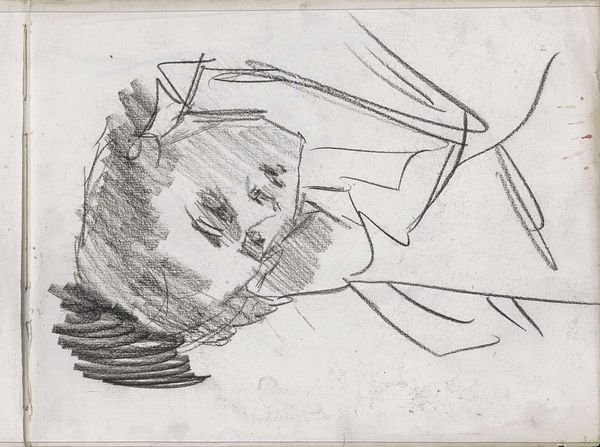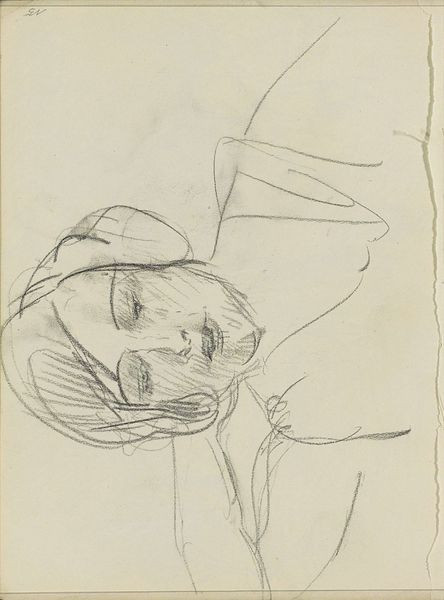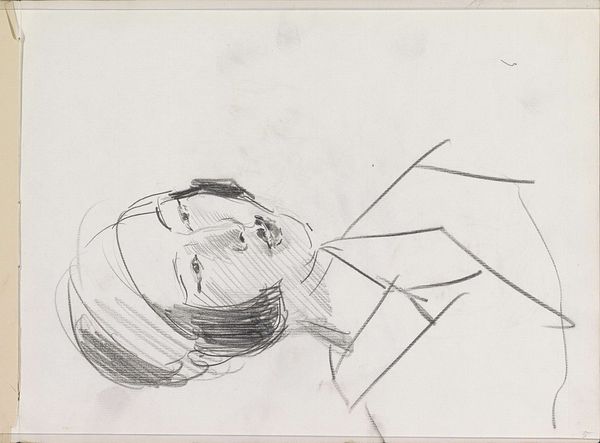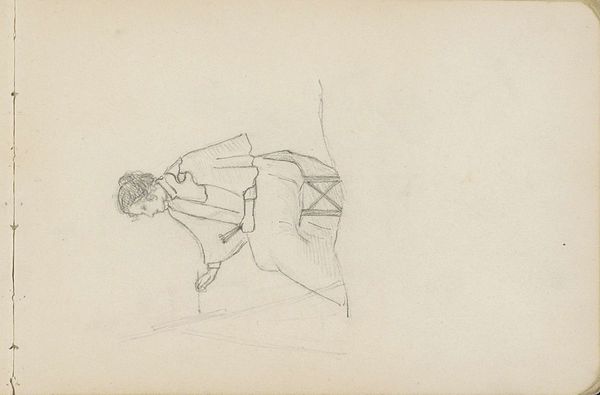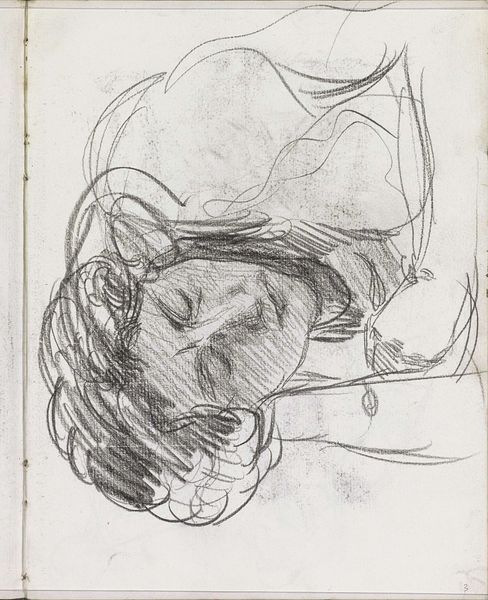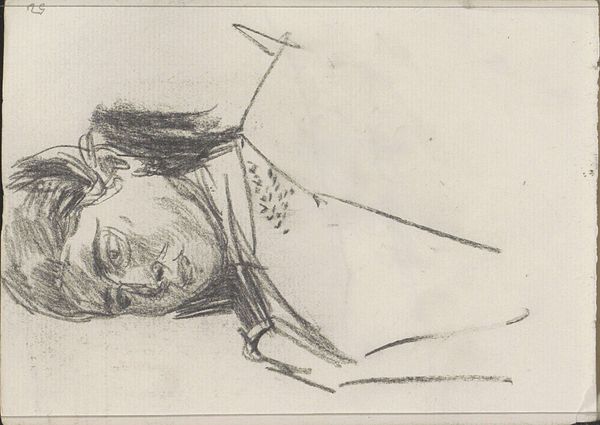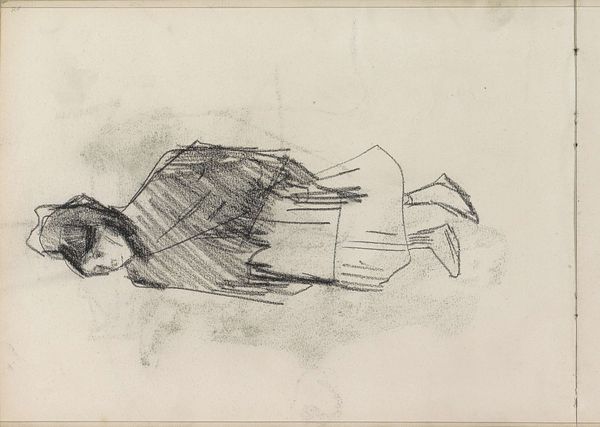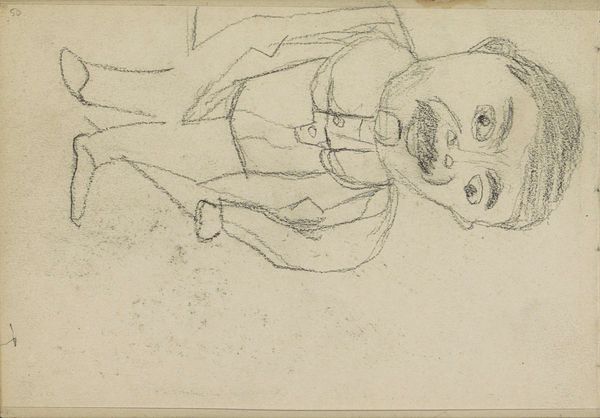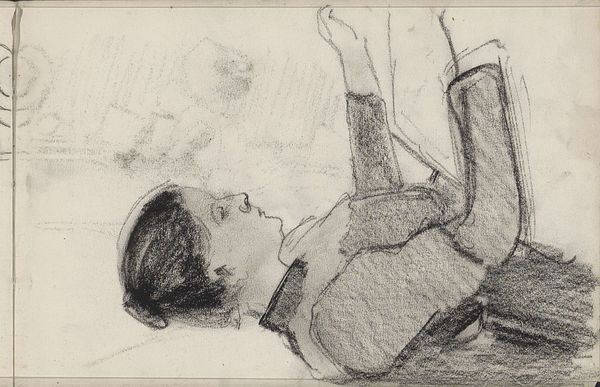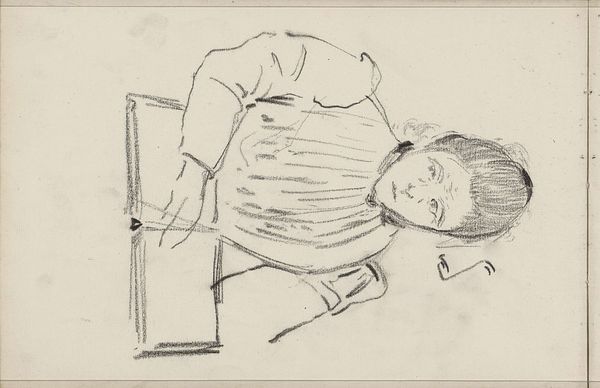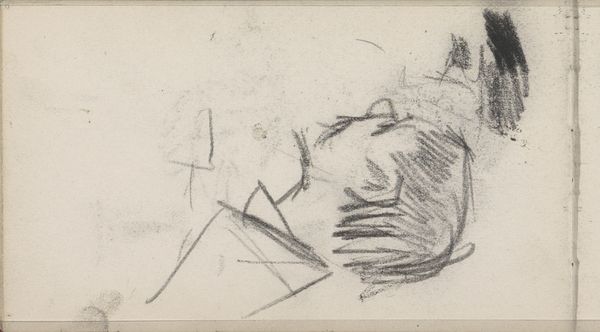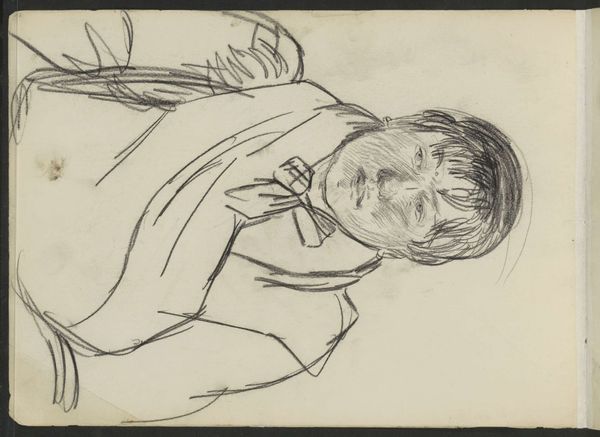
Copyright: Rijks Museum: Open Domain
Curator: Right, let’s turn our attention to this unassuming sketch by George Hendrik Breitner, "Portret van een onbekende vrouw," likely from between 1893 and 1899. It's a drawing in graphite, a peek into the artist’s process, really. Editor: It’s more than unassuming, I think. There’s a raw immediacy. It feels like a stolen glance, a moment captured before it vanishes. Makes you wonder, who was she? And why did Breitner find her interesting? Curator: Well, her social position is worth considering. Breitner was fascinated by the working class. Drawings like this challenge established notions of what's "worthy" of artistic representation, diverting from commissioned portraits of the bourgeoisie. The loose pencil work... that's crucial. It was cheap and accessible. Editor: That makes me think. Look at the unfinished quality, the deliberate sketchiness. The visible strokes are so telling! The material reality of the graphite right there on the page. Curator: Exactly! And remember, sketchbooks in this period, even when produced by well-known artists, blur boundaries. Was this for personal study, or intended as a preparatory sketch for a painting, or even art to be displayed? The ambiguity forces us to rethink traditional hierarchies between sketches and "finished" works. What makes something "Art," anyway? Editor: Perhaps the question should be shifted. It feels intensely modern, almost as if done yesterday in someone's private book. I love the pose, it’s off-kilter and vulnerable. Like she doesn't know she's being watched. What sort of a connection was there? How fleeting? Curator: We can also think about Breitner's broader project: the demystification of artistic genius through sheer volume and exploration of different kinds of materials, from charcoals to oils. He explored the process of generating work to the extent it questions what an artwork actually is. He questioned traditional roles within his process by creating such art pieces as sketches and works on paper. Editor: Well, seeing the finished, fully rendered paintings versus something like this is a nice reminder. And on that note, the mystery remains. Curator: Yes, precisely. Thinking about this from the artist’s labor shifts what we might consider valuable or noteworthy, within the history of the art object. Editor: Indeed. Thanks for taking the time.
Comments
No comments
Be the first to comment and join the conversation on the ultimate creative platform.
